Abstract
A method of epitope analysis is described in which the binding of one monoclonal antibody (MAb) to radiolabeled carcinoembryonic antigen (CEA) competes with the subsequent binding of an immobilised second MAb. From the degree of blocking obtained, we have identified both structurally related and independent epitopes on CEA. Using this technique to study fifteen MAbs, we have been able to recognise at least 6 unrelated epitopes of the CEA glycoprotein. Further characterisation of these epitopes was accomplished by means of immunohistochemistry. Of the fifteen MAbs, 6 were specific for CEA and reacted with at least 3 unrelated regions of the glycoprotein. Of the remaining 9 MAbs, 2 cross-reacted with erythrocytes, 5 with components of liver and 7 with polymorphonuclear neutrophils. Cross-reactions with liver were varied showing differential antibody specificity for bile canaliculi, Kupffer cells and bile duct epithelium. A high degree of correlation between epitope relatedness and immunohistochemical specificity was found. Two CEA-specific and 4 cross-reactive MAbs were also shown to react with ion-sensitive sites on the CEA glycoprotein.
Full text
PDF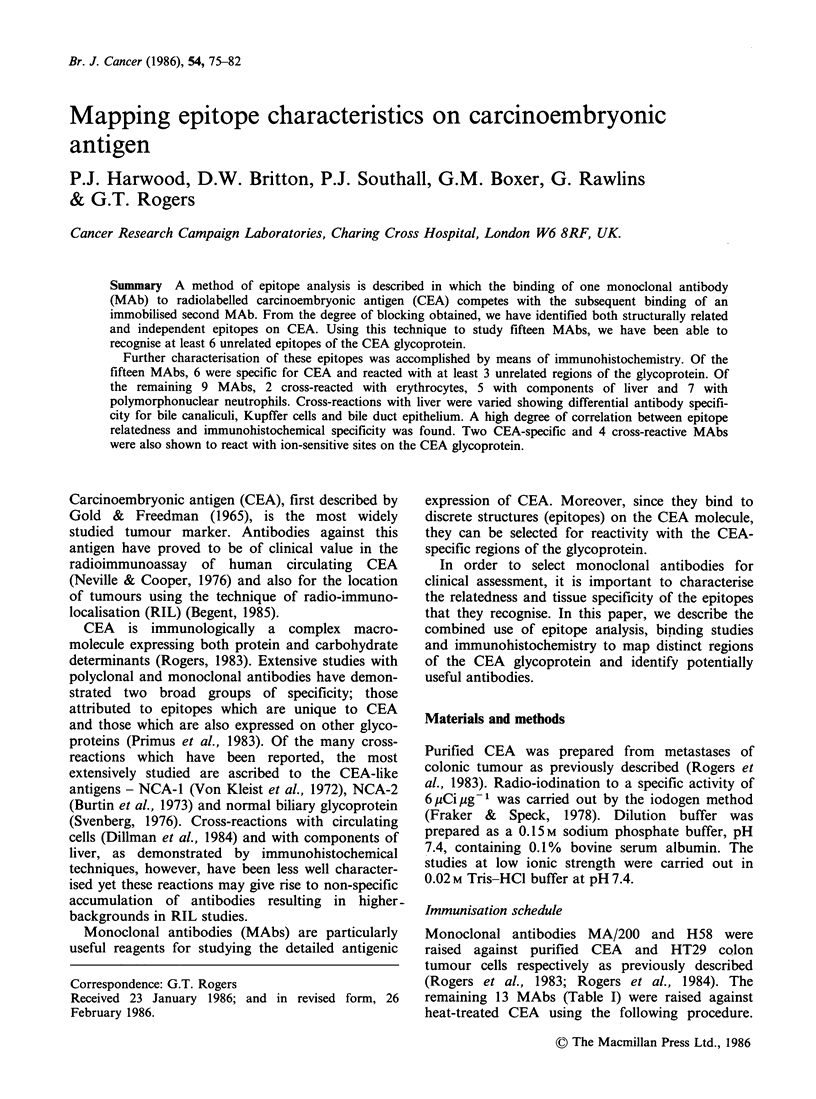
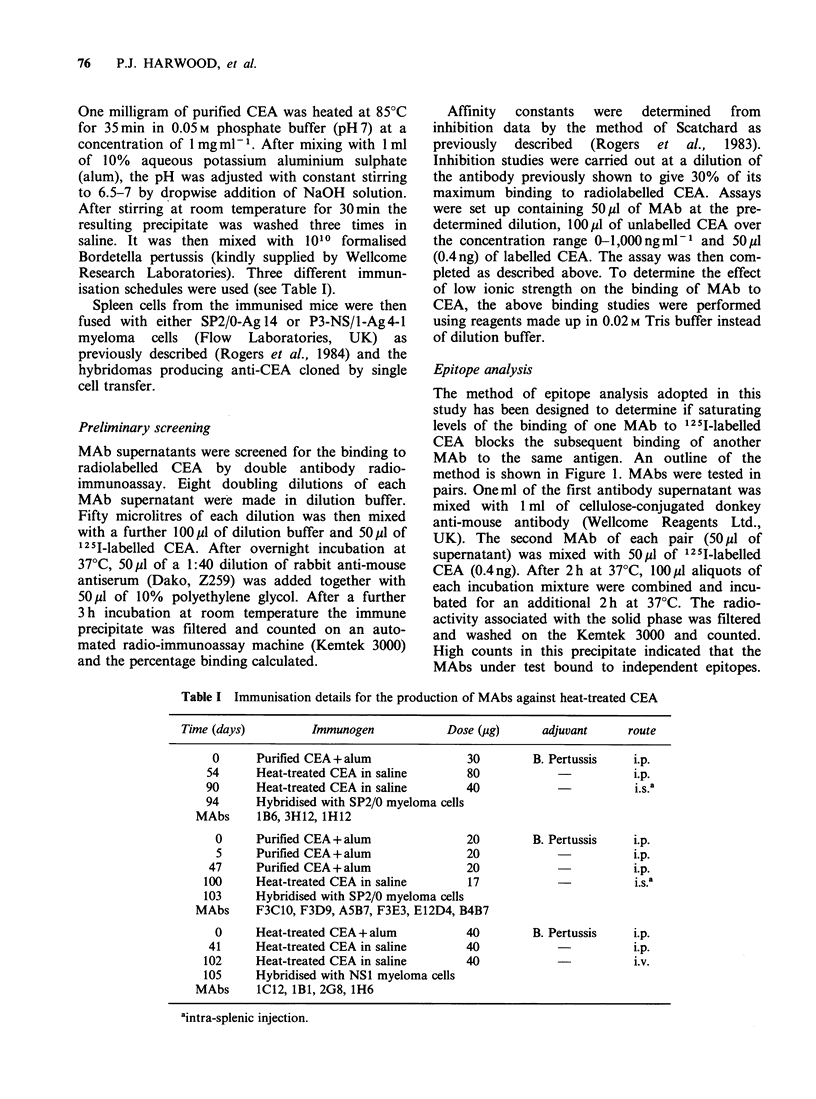
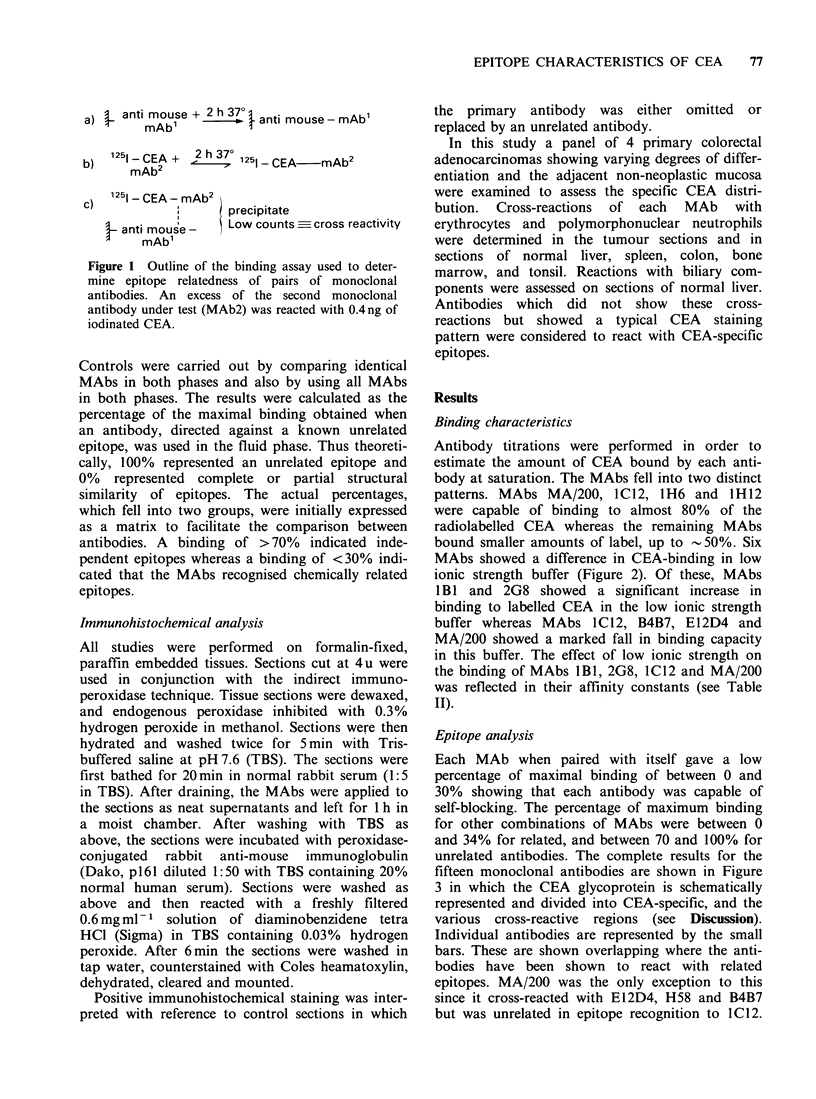
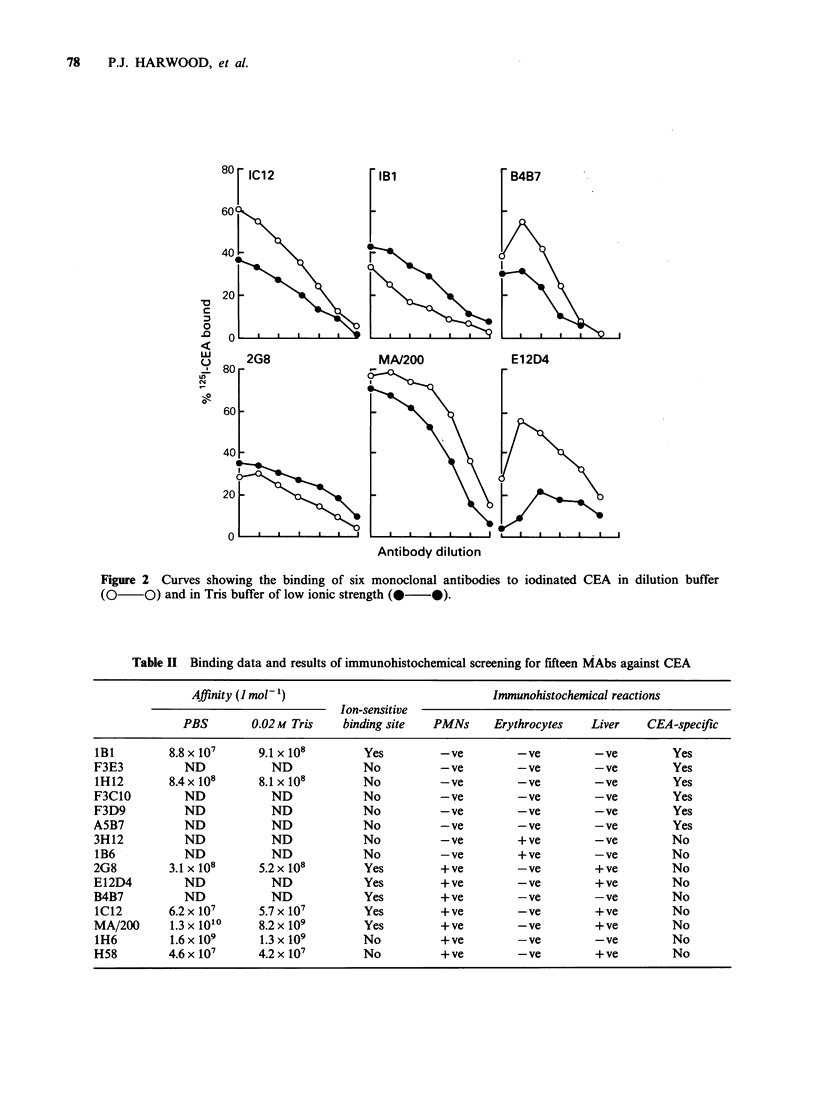

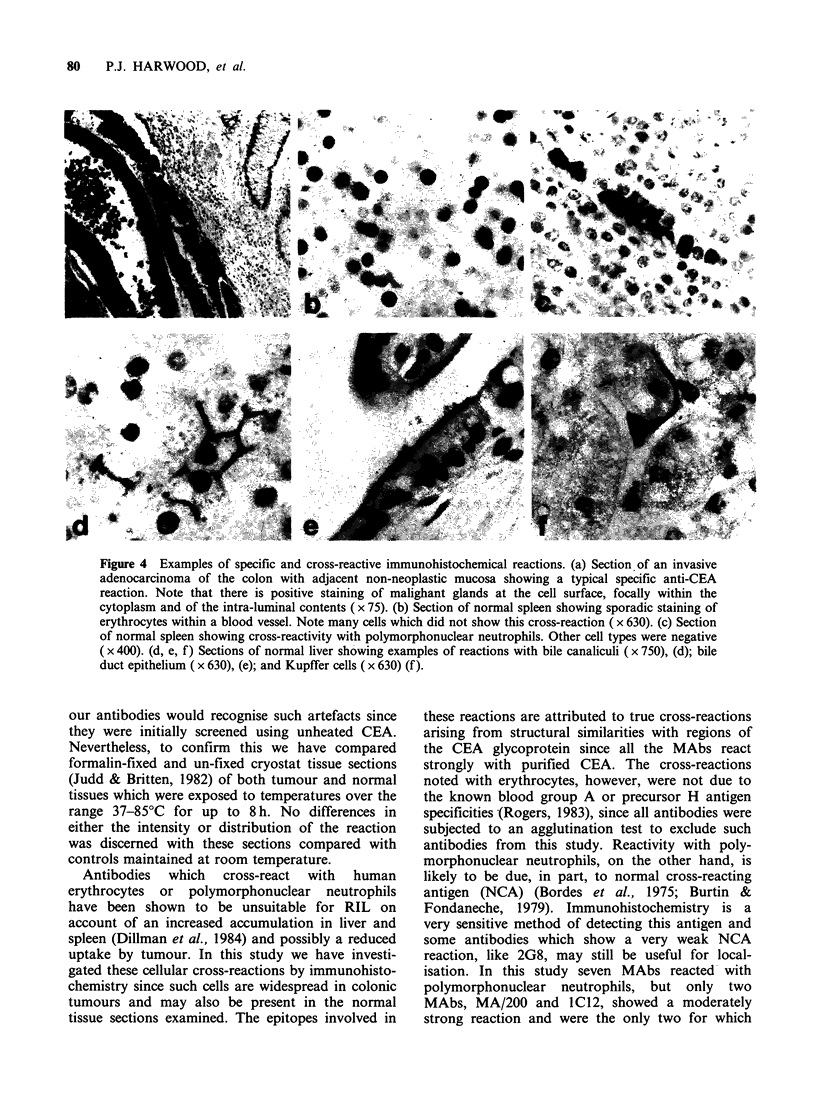
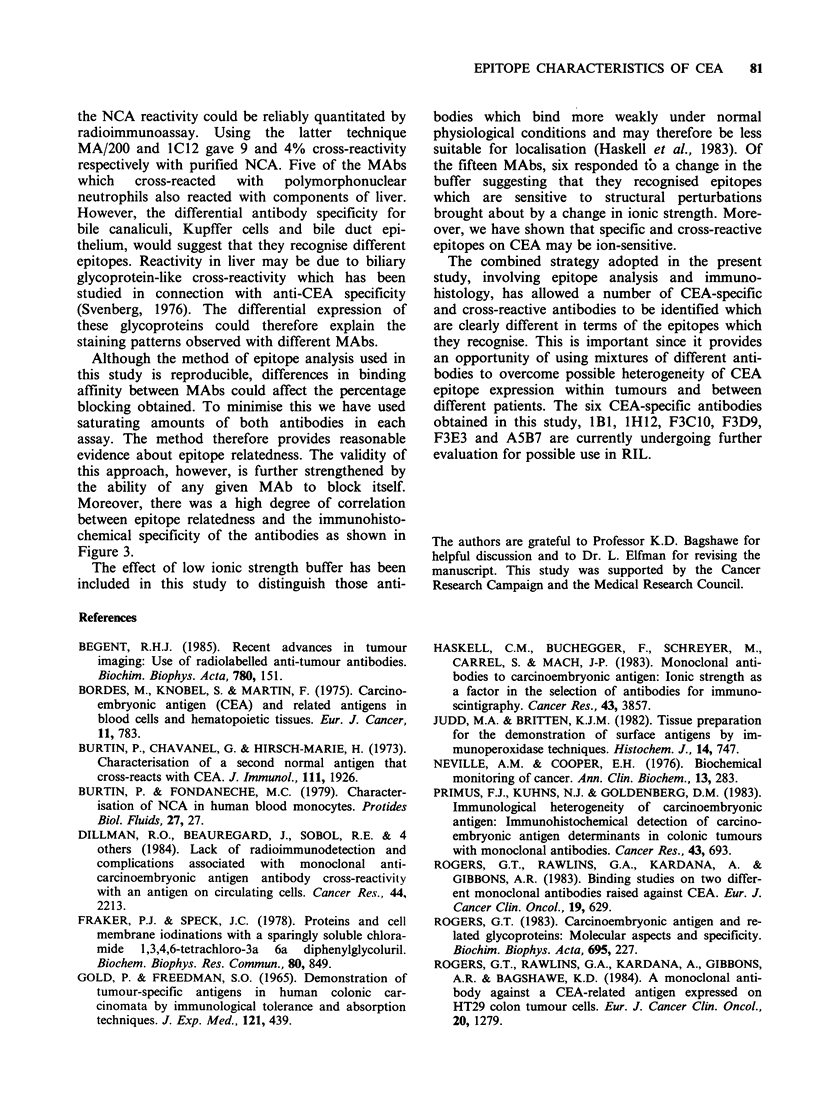
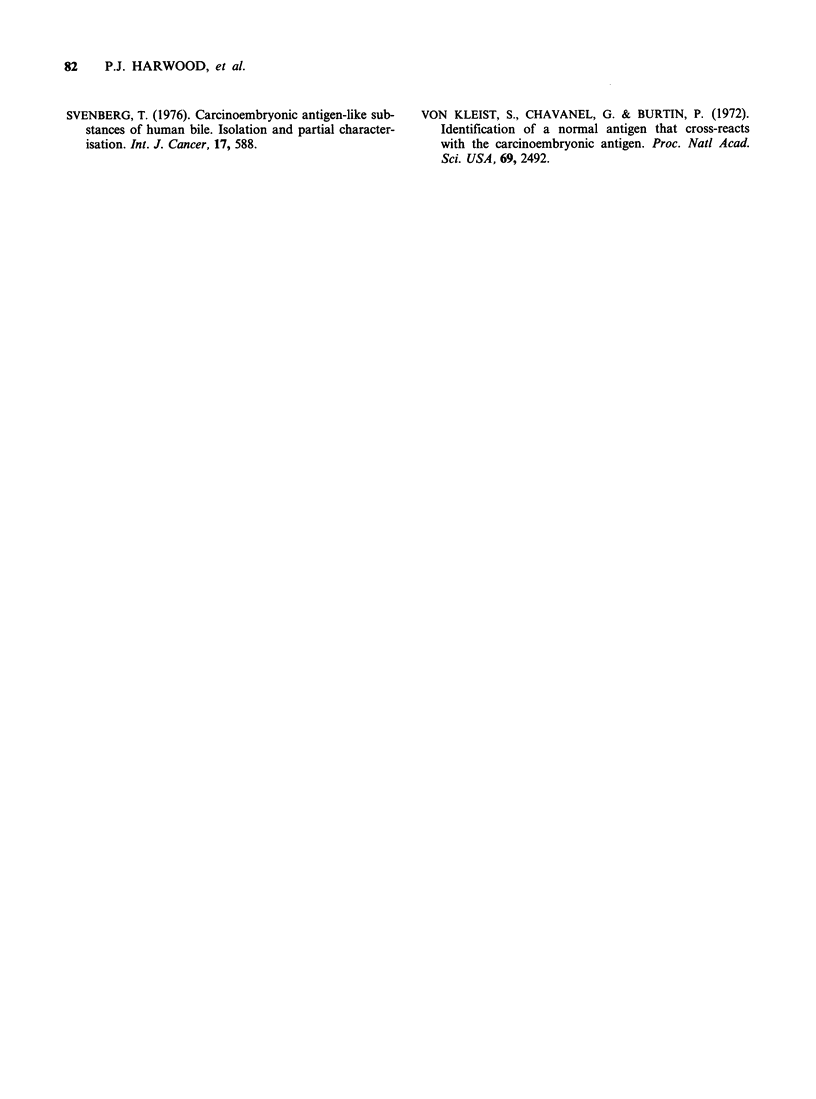
Images in this article
Selected References
These references are in PubMed. This may not be the complete list of references from this article.
- Begent R. H. Recent advances in tumour imaging. Use of radiolabelled antitumour antibodies. Biochim Biophys Acta. 1985;780(2):151–166. doi: 10.1016/0304-419x(84)90003-9. [DOI] [PubMed] [Google Scholar]
- Bordes M., Knobel S., Martin F. Carcinoembryonic antigen (CEA) and related antigens in blood cells and hematopoietic tissues. Eur J Cancer. 1975 Nov;11(11):783–786. doi: 10.1016/0014-2964(75)90171-1. [DOI] [PubMed] [Google Scholar]
- Burtin P., Chavanel G., Hirsch-Marie H. Characterization of a second normal antigen that cross-reacts with CEA. J Immunol. 1973 Dec;111(6):1926–1928. [PubMed] [Google Scholar]
- Dillman R. O., Beauregard J. C., Sobol R. E., Royston I., Bartholomew R. M., Hagan P. S., Halpern S. E. Lack of radioimmunodetection and complications associated with monoclonal anticarcinoembryonic antigen antibody cross-reactivity with an antigen on circulating cells. Cancer Res. 1984 May;44(5):2213–2218. [PubMed] [Google Scholar]
- Fraker P. J., Speck J. C., Jr Protein and cell membrane iodinations with a sparingly soluble chloroamide, 1,3,4,6-tetrachloro-3a,6a-diphrenylglycoluril. Biochem Biophys Res Commun. 1978 Feb 28;80(4):849–857. doi: 10.1016/0006-291x(78)91322-0. [DOI] [PubMed] [Google Scholar]
- GOLD P., FREEDMAN S. O. DEMONSTRATION OF TUMOR-SPECIFIC ANTIGENS IN HUMAN COLONIC CARCINOMATA BY IMMUNOLOGICAL TOLERANCE AND ABSORPTION TECHNIQUES. J Exp Med. 1965 Mar 1;121:439–462. doi: 10.1084/jem.121.3.439. [DOI] [PMC free article] [PubMed] [Google Scholar]
- Haskell C. M., Buchegger F., Schreyer M., Carrel S., Mach J. P. Monoclonal antibodies to carcinoembryonic antigen: ionic strength as a factor in the selection of antibodies for immunoscintigraphy. Cancer Res. 1983 Aug;43(8):3857–3864. [PubMed] [Google Scholar]
- Judd M. A., Britten K. J. Tissue preparation for the demonstration of surface antigen by immunoperoxidase techniques. Histochem J. 1982 Sep;14(5):747–753. doi: 10.1007/BF01033624. [DOI] [PubMed] [Google Scholar]
- Neville A. M., Cooper E. H. Biochemical monitoring of cancer. A review. Ann Clin Biochem. 1976 Jan;13(1):283–305. doi: 10.1177/000456327601300101. [DOI] [PubMed] [Google Scholar]
- Primus F. J., Kuhns W. J., Goldenberg D. M. Immunological heterogeneity of carcinoembryonic antigen: immunohistochemical detection of carcinoembryonic antigen determinants in colonic tumors with monoclonal antibodies. Cancer Res. 1983 Feb;43(2):693–701. [PubMed] [Google Scholar]
- Rogers G. T. Carcinoembryonic antigens and related glycoproteins. Molecular aspects and specificity. Biochim Biophys Acta. 1983 Dec 29;695(3-4):227–249. doi: 10.1016/0304-419x(83)90013-6. [DOI] [PubMed] [Google Scholar]
- Rogers G. T., Rawlins G. A., Kardana A., Gibbons A. R., Bagshawe K. D. A monoclonal antibody against a CEA-related antigen expressed on HT29 colon tumour cells. Eur J Cancer Clin Oncol. 1984 Oct;20(10):1279–1286. doi: 10.1016/0277-5379(84)90257-8. [DOI] [PubMed] [Google Scholar]
- Rogers G. T., Rawlins G. A., Kardana A., Gibbons A. R. Binding studies on two different monoclonal antibodies raised against CEA. Eur J Cancer Clin Oncol. 1983 May;19(5):629–639. doi: 10.1016/0277-5379(83)90179-7. [DOI] [PubMed] [Google Scholar]
- Svenberg T. Carcinoembryonic antigen-like substances of human bile. Isolation and partial characterization. Int J Cancer. 1976 May 15;17(5):588–596. doi: 10.1002/ijc.2910170506. [DOI] [PubMed] [Google Scholar]
- von Kleist S., Chavanel G., Burtin P. Identification of an antigen from normal human tissue that crossreacts with the carcinoembryonic antigen. Proc Natl Acad Sci U S A. 1972 Sep;69(9):2492–2494. doi: 10.1073/pnas.69.9.2492. [DOI] [PMC free article] [PubMed] [Google Scholar]



